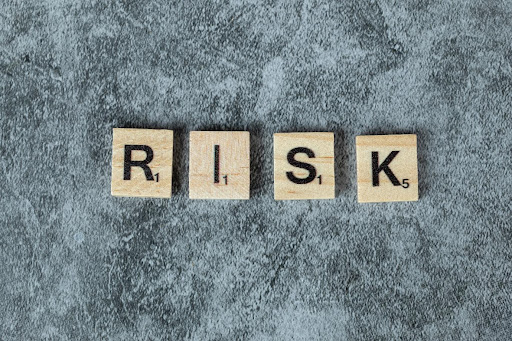Any risk that could have an adverse effect on the overall organization, the procedures used, the output of goods and services, or revenue is referred to as a supply chain risk. A company is only as strong as the supply network it relies on. Therefore, executives must be aware of and make an effort to grasp the factors that support effective risk management in the supply chain. The timely delivery of your products is merely a portion of the process.
In the digital business world, internal and external supply chain risks are crucial. For instance, a supply chain can be disrupted by these two categories of risks. External supply chain risks come from sources outside the company. As a result, they are more difficult to foresee and demand more resources to combat. They consist of:
- Supply risks
- Demand risks
- Environmental risks
- Commercial risks.
Internal supply chain risks, on the other hand, are under the company’s control. They are risks associated with manufacturing, planning, and control, risk mitigation, and risk repercussions.
- Supplier Risk
Working with other businesses carries various supply chain risks, particularly in the supply chain where dependence on other businesses is considerable. These supply chain risks might range from a supplier going out of business to a product not being delivered in the proper quantity or on time. A thorough onboarding and monitoring process, using certified suppliers and having a solid relationship with the supplier are just a few strategies to lower this risk.
- Policies and Cultures
Having a worldwide supply chain poses a risk to businesses operating in several nations, each with its own unique business culture. Because what is accepted in one culture may not be in another and could be illegal, this poses a danger to the supply chain. Similar to how laws, trade regulations, and trade restrictions differ from one country to the next, businesses need to be aware of these when dealing. The operation of the supply chain will be altered by these kinds of policies. The supply chain must be cautious of political and economic stability in the nations where it operates in addition to changing legislation because these factors could also have a detrimental impact on the supply chain.
- Environmental Risk
Environmental supply chain risks come in many forms and can have unforeseen effects on a supply chain. Even though some natural disasters can be irregular and unusual, the risk rises the more nations a supply chain crosses. Natural disasters like earthquakes and flooding are examples of environmental hazards the supply chain encounters. Extreme weather, port closures, and other man-made disasters are additional environmental risks that may impact the supply chain. Even if some of these hazards are unforeseen, there are steps that can be taken to lessen the harm that is done after the fact. One of these is putting in place an effective communication system, which will at the very least guarantee that observations of the damage are accurate and that backup plans can be created swiftly.
- Demand Risk
Various factors, such as the status of the economy and other variables, might influence demand, posing a danger to the supply chain. A thorough demand forecasting system must be in place to reduce the danger of producing too much or too little because it becomes difficult to estimate how much to produce the more unpredictable the demand is. The risk to the supply chain is decreased by more accurate demand projections.
- Operational Risk
Internal supply chain risks are those that interrupt operations or processes. These disruptions can be brought on by any business activity and, if not controlled or maintained, can have a negative impact on both the supply chain and the business. These can range from technical failures to production issues or equipment breakdowns.
- Economic Risk
Exchange rates, labour costs, and interest rates are all influenced by the economy, which also has an impact on other nations where the company or its suppliers do business. These factors cause inflation. Cost-cutting measures will need to be taken, which may not be the most effective way for the supply chain but since it spans many countries, the state of the situation in one country will affect all other countries, as the recent recession demonstrated this can have bad consequences on the supply chain with decreases in global demand and the stagnant economic climate.
- Control Risk
There is a risk of lack of control when many supply chain processes are not carried out by the company or plant itself. There is also a risk of lack of control from the company when there is a high reliance on other companies or products and parts being shipped in from other countries. Because the results of these processes can be unpredictable, one way to reduce supply chain risk is by having effective communication systems in place.
- Unresponsive Supply Chain
It is essential to have a robust dynamic system in place to respond to any change in order to keep the supply chain active and operating effectively. If any of the aforementioned factors causes a sudden change in the supply chain, the supply will need to be responsive. This can be challenging because some of the aforementioned factors are unpredictable.
- Reputation
The supply chain may be impacted by a company’s reputation. Unethical behaviour by external businesses from which the firm sources will affect stakeholders’ perceptions of the organization, which could result in a decline in demand, morale, and investment.
- Resource Risk
Last but not least, a lack of human resources affects the supply chain and typically happens when crucial workers are absent from the operation. People can be absent from a process for a variety of reasons, such as illness or vacation, but when this happens, the supply chain is not operating efficiently and to its full potential.
There may be numerous additional sorts of risks in the supply chain; it’s crucial to know which one can harm you the most. For supply chain specialists, managing supply chain risk is of the utmost importance. Implementing supply chain risk management is a challenging endeavour because it necessitates the participation of numerous companies throughout the supply chain. Keeping a watch on the top 10 supply chain risks is essential to reducing those risks when and if they occur because managers need to be aware of the enabling elements and their relative relevance for effective supply chain risk management implementation. Stay tuned for our next article on how to manage supply chain risks and check out our Procurement & Supply Chain Management course for in-depth knowledge.







